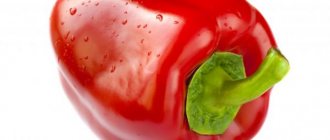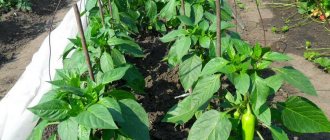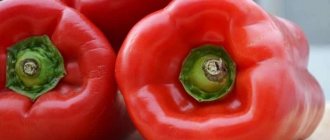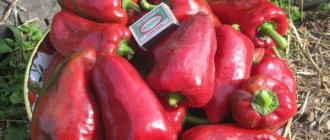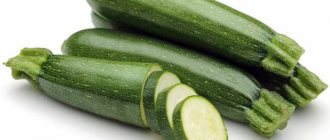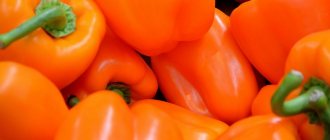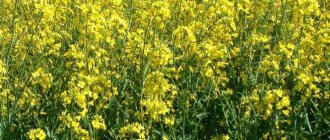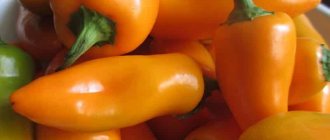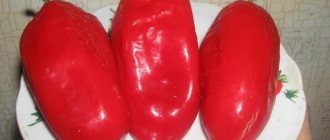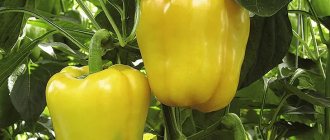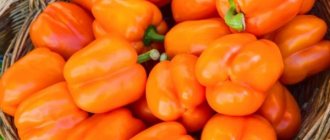What is cayenne pepper?
Cayenne pepper is a type of red chili pepper, usually dried and ground into powder. It is used as a seasoning for meat, fish, vegetables, sauces and many other dishes. This is quite a hot pepper, with an average Scoville rating of 30,000 - 50,000. Just a pinch of this piquant red powder is all it takes to create a powerful heat in your mouth.
Cayenne pepper is especially popular in Mexican, Asian, and Indian cuisines. A member of the nightshade family and related to bell peppers, paprika and jalapeños, it is native to every continent today.
What does cayenne pepper look like - photo
Characteristics of the variety
Cayenne pepper is a relative of the chili pepper in the hot pepper group. We are talking about many types of different sizes and colors. Color can be:
- green;
- yellow;
- red.
Size from 2 to 10 cm.
The spiciness of pepper depends on the type. Depending on the severity and heat, Cayenne pepper is classified on a scale from 1 to 120. On this scale, shades of aroma, pungency, astringency and color are distinguished.
Currently, the largest producers of Cayenne pepper are parts of West Africa, Mexico, Brazil, Colombia, California, Guyana, Vietnam, Indonesia and India. Cayenne pepper cultivation has spread to other countries and it is often grown at home in flower pots.
general description
The homeland of this type of pepper (Chay Pepper Cayenne) is Central America. It is now one of the important commercial crops grown in India, Pakistan, China, Argentina and the USA.
Cayenne pepper is a small perennial shrub reaching approximately 90-100 cm in height. Its woody stem with numerous branches is covered with dense dark green foliage. Small creamy white flowers appear throughout the bush and subsequently develop into long (7-12 cm), thin, glossy bright green fruits (pods). Ripe fruits become dark red in color.
Inside each pod are many small, flat, cream-colored seeds.
Cayenne pepper is most often found in powdered form, but can be found fresh (green or red pods), dried, or even made into an oil.
Care
This is a very unpretentious plant. With proper care at home, this will delight you with a harvest for up to five years in a row. What conditions need to be created?
Seeds
Each pod contains several dozen seeds. If desired, new plants can be grown from these seeds.
In cooking, they are used only by the bravest: they are several times sharper than the pulp.
Care after purchase
Having bought Cayenne pepper in the store, you should immediately think about replanting it. The flowers in the store grow in soil, most of which is peat. It is convenient to transport the plant in this way, as it is very light. But leaving the flower in it for a long time is fatal, and you should also consider:
- That the pots in which the plants are sold are not suitable for growing: as a rule, they are already quite small.
- If the ends of the roots come out through the drainage holes, this is a sure sign that the pepper needs a more spacious “home.” However, if the plant is covered with fruits, then after transplanting it may drop them.
- In this case, it is better to opt for a more gentle version - transshipment.
- To do this, the plant is placed in a new pot with a lump of earth from the old one. And the void is filled with new soil.
- After this procedure, the Cayenne pepper is watered generously and placed on the windowsill.
Lighting
Cayenne pepper is a light-loving plant. It feels best on windows in the southwest and southeast. You can determine whether it has enough light by looking at the leaves.
With a lack of light, the leaves fade and fall off. This is most likely to happen in the winter, with less daylight. In this case, the peppers need to be provided with additional fluorescent lighting. They are installed in such a way that there is at least 25 cm from the lamp to the top of the flower.
Watering
Cayenne pepper does not need frequent watering. But you need to make sure that the soil is not completely dry. If the room where the plant grows has dry air, the plant will require regular spraying.
Trimming
Cayenne pepper bushes are pretty great on their own. However, if they are pruned, the plant will become even bushier. If you wish, you can form a bush of any shape.
In autumn or spring, it is better to prune the pepper, removing dried shoots and sprouting branches that spoil the appearance of the plant.
What is the smell and taste of cayenne pepper?
Cayenne pepper has a deceptively mild aroma, but it has a hot, sizzling flavor. When cooking, this spice should be used very sparingly, as it is much hotter than it seems at first glance.
The heat level of cayenne pepper ranges from 30,000-50,000. The heat is caused by the active component capsaicin, which causes intense irritation and a hot sensation when it comes into contact with the thin lining of the mouth, throat and stomach. A strong burning sensation is perceived by the body as “hot” through free nerve endings in the mucous membrane.
Drinking cold yogurt or kefir will help reduce the burning pain by diluting the concentration of capsaicin and also prevent it from coming into contact with the intestinal walls.
Pepper storage
There are many ways to increase the shelf life of chili peppers. The preferred place to store hot peppers is a dark, cool room or refrigerator. In this case, the fruits are pre-packed hermetically in a polyethylene bag. The pods are stored using this method for no more than 14 days, if necessary, eaten fresh.
If you need to preserve cayenne pepper for a longer time, it is recommended to use the following freezing method:
- To begin, sort your entire stock of pods into small portions. Estimate the approximate amount that you are able to use at one time. This is necessary so that, if necessary, it is possible to obtain the required volume, without subjecting the remaining part of the stock to thawing, and subsequently not subjecting the vegetable to re-freezing.
- Then chop it into large or small pieces, depending on your preference. Don't forget to rinse the pods first.
- Pack in polyethylene bags or plastic containers and place in the freezer compartment.
To reduce the heat of cayenne pepper slightly, remove all seeds before freezing.
Another equally popular way to store red pepper pods is drying. In addition, this is the easiest way, if necessary, to extend the shelf life of a large volume of peppers. Tie the pods to a clothesline using threads and leave for several days. Make sure the pods are not touching each other. It is recommended to dry in a well-ventilated area with access to sunlight.
If you don't have a few days to wait for the chili to dry on its own, use a gas or electric stove. Rinse the pepper in cool water, then pat it dry in a towel (to remove excess moisture). Many housewives agree that it is best to cut the chili into small pieces and remove the stems. However, this is not necessary.
Line baking sheets with parchment paper and arrange chiles in a single layer. Place the baking sheets with the peppers in the oven for a few minutes. The oven temperature must be at least 50 degrees. Leave the oven door slightly open - this will allow the chili to dry evenly rather than overcook.
Store dried pods in sealed containers in dark places at room temperature. The most preferable is an ordinary glass jar with a plastic lid.
How to choose cayenne pepper
It is better to buy dried whole cayenne pepper pods instead of powder, since in stores it can often contain extraneous additives.
Look for peppers with a shiny red color and healthy stems. Avoid pods that have spots, spoiled tips, or signs of mold.
Dried fruits can be ground to powder as needed using a hand mill.
If you want to buy dry powder, choose genuine branded products.
Growing
Cayenne pepper seeds can be purchased at the store or taken from the pod, and you will also need to know:
- The seedlings are carefully removed and distributed between two wet wipes.
- Here they remain until germination. It is important to ensure that the wipes are always damp.
- The sprouts hatch in 2-3 days.
- After this, the peppers are planted in seedling pots, where they should grow and become stronger.
- At this time they need a high temperature - +25-29 degrees, and a lot of light. However, they should still be protected from direct sunlight.
- Once the shoots have two pairs of actual leaves, you can select the strongest ones and replant them in pots.
Priming
The ideal soil for Cayenne pepper is a mixture of approximately equal parts loam, humus and sand. You can use prepared soil. In this case, the choice should be made on what is intended for tomatoes.
Expert opinion
Filatov Ivan Yurievich, private farmer for more than 30 years
During the first 3-4 months after transplanting, the pepper will not require additional nutrition; this will be enough to feed in fresh soil. And then about once a month you can apply fertilizer. They can be sold in a gardening store because peppers, although ornamental, are vegetables. Those fertilizers that are intended for tomatoes are suitable for him.
Where to buy cayenne pepper
Regular supermarkets often sell ground cayenne pepper, but there is a high probability of buying counterfeit - a spice diluted with foreign additives.
To find real fresh (or dried) seasoning, you'll likely need to shop online. You will find guaranteed quality products from world-famous manufacturers in the IHerb store.
History of discovery
Cayenne pepper is native to regions with warm climates: South America, India, Africa. About 5000 years before the birth of Christ, local tribes were able to unravel its beneficial properties and actively used them in everyday life. So, pepper was used as:
- a natural anesthetic that can cope with severe pain;
- an effective means to fight the enemy - when dried particles of the pods get on the mucous membrane of the eyes, they cause severe lacrimation;
- an important component in embalming the deceased;
- spices in cooking;
- immunostimulant.
Europe learned about the exotic spice thanks to Christopher Columbus. Cayenne pepper quickly gained popularity among the people, becoming a more affordable alternative to expensive black pepper.
The fiery overseas vegetable also owes its name to sailors. In those distant times, South American spices were sent to Europe by ship from the port of Cayenne. This is how the name “cayenne pepper” became firmly established among the people. Nowadays it is widespread almost all over the world, but East Africa is traditionally the leader in cultivation and import.
Chemical composition
Although cayenne pepper is unbearably hot even in small quantities, it is one of the healthiest spices, packed with minerals, vitamins and phytonutrients.
Nutritional value of fresh red cayenne pepper per 100g.
| Name | Quantity | Percentage of daily value, % |
| Energy value | 318 Kcal | 16 |
| Carbohydrates | 56.63 g | 43 |
| Protein | 12.01 g | 21 |
| Fats | 17.27 g | 57,56 |
| Dietary fiber | 27.2 g | 71 |
| Folates | 106 mcg | 26 |
| Niacin | 8.701 mg | 54 |
| Pyridoxine | 2,450 mg | 39 |
| Riboflavin | 0,919 | 71 |
| Thiamine | 0.328 mg | 27 |
| Vitamin A | 41610 IU | 1387 |
| Vitamin C | 76.4 mg | 127 |
| Vitamin E | 29.83 mg | 199 |
| Vitamin K | 80.3 mg | 67 |
| Sodium | 30 mg | 2 |
| Potassium | 2014 mg | 43 |
| Calcium | 148 mg | 15 |
| Copper | 0.373 mg | 41 |
| Iron | 7.80 mg | 97,5 |
| Magnesium | 152 mg | 38 |
| Manganese | 2.00 mg | 87 |
| Phosphorus | 293 mg | 42 |
| Selenium | 8.8 mcg | 18 |
| Zinc | 2.48 mg | 22,5 |
| Carotene-ß | 21840 mcg | — |
| Cryptoxanthin-ß | 6252 mcg | — |
| Lutein-zeaxanthin | 13157 mcg | — |
Description of culture
Cayenne pepper is one of the hottest spices in the world . In the wild, the plant is found in tropical climates, where pepper bushes grow up to 1.5 meters in height. The island of Java is considered the birthplace of the culture.
The spicy vegetable has become a very popular seasoning . Now the plant is cultivated all over the world in a variety of climatic zones. In our country, hot fruits are grown mainly in greenhouses. Breeders have developed a large number of varieties of this crop specifically for growing at home.
Small bright red pods give the plant an elegant decorative appearance. The shape of peppers can be very different: spherical, cone-shaped, proboscis-shaped.
The benefits and harms of cayenne pepper
The product has a soft, pleasant aroma and a hot, scalding taste . Peppers owe their spiciness to a substance called capsaicin, which has many beneficial properties. Capsaicin helps the body resist colds, activates metabolic processes, improves blood circulation and thins the blood, prevents the development of malignant tumors, and protects cells from toxins.
The heat of foods, including peppers, is measured on the Scoville heat scale . Whether a pepper is hot or not is determined by its capsaicin content. The heat of cayenne pepper ranges from 30,000 to 40,000 units. How many Scovilles does a sweet bell pepper have? Total from 1 to 500, depending on the variety. In addition to capsaicin, cayenne pepper also contains other alkaloids: chavicine and piperidine.
The burning fruits are distinguished by a rich composition of microelements and vitamins . The pods contain fiber, protein, B vitamins (thiamine, pyridoxine, folic acid), as well as C, A, E, K, iron, manganese, potassium.
Despite many beneficial properties , excessive consumption of the spicy product is dangerous to health, as it causes a burn to the gastric mucosa, gastric upsets and irritates the mucous membranes. Therefore, use hot seasoning in moderation.
Caution must also be observed when preparing dishes with seasoning. You should wear gloves when cutting fresh vegetables.
This is interesting:
What is Dungan pepper and how can it be used?
Are allspice and black pepper the same thing?
How and where does pink pepper grow?
Physiological role (what effect it has)
This list includes only a portion of the health benefits attributed to cayenne pepper:
- improves the immune system;
- prevents the formation of stomach ulcers;
- speeds up metabolism;
- reduces blood sugar levels;
- stimulates blood circulation;
- improves digestion;
- reduces gas formation;
- stimulates appetite;
- reduces inflammatory processes;
- soothes joint pain;
- supports the health and function of the pancreas, lungs, kidneys, liver, heart, stomach and spleen;
- minimizes the appearance of scars when applied topically;
- effective against colds, coughs and congestion; treats fungal infections;
- acts as a powerful antioxidant.
Diseases and pests
“Cayenne” pepper is a strong plant, it is little susceptible to pests and diseases. Sometimes it can be attacked by gray mold. In this case, the infected areas are removed, and the pepper is treated with medicines that can be purchased in specialized stores.
Readers who are interested in chili peppers may find other articles about different types and their cultivation useful:
- "Habanero";
- "Bell";
- "Jalapeño";
- "Spark."
Growing Cayenne pepper at home is not at all difficult. This plant is strong and unpretentious. It is ready to delight with its fruits, which are as beautiful as they are healthy.
If you find an error, please select a piece of text and press Ctrl+Enter.
Health Benefits of Cayenne Pepper
Cayenne pepper has received special attention for its medicinal properties, because before becoming a culinary seasoning, it was used for thousands of years only as a medicine.
- It contains the healthy alkaloid compound capsaicin, which gives it a strong pungent taste. It has antibacterial, anticarcinogenic, analgesic and antidiabetic properties. When used correctly, capsaicin also reduces triglyceride and bad cholesterol levels in obese individuals.
- Fresh cayenne pepper - red or green - is a rich source of vitamin C (about 76.4 mg per 100 g or 127% of the daily value). It is a powerful water-soluble antioxidant that is also necessary for collagen synthesis in the body. Collagen maintains the integrity of blood vessels, skin, organs and bones. Regular consumption of foods rich in vitamin C develops resistance to infectious diseases (increases immunity) and removes free radicals from the human body.
- Cayenne pepper contains the highest amount of vitamin A among spices. Only 100 g contains 41,610 IU or as much as 1387% of the daily value of vitamin A.
- This valuable spice is a source of antioxidant flavonoids such as carotenes, lutein, zeaxanthin and cryptoxanthin. They help protect the body from the harmful effects of free radicals.
- Cayenne pepper has a lot of minerals. When consumed regularly, even in small quantities, it will provide sufficient levels of iron, copper, zinc, potassium, manganese, magnesium and selenium. In the body, manganese is used as a cofactor for the antioxidant enzyme superoxide dismutase. Selenium is an antioxidant trace element necessary for the normal functioning of the heart and liver.
- 100 g of cayenne pepper contains 2014 mg or 47% of the daily amount of potassium. It is an important electrolyte in cells and body fluids that helps control heart rate and blood pressure. This spice is also high in B vitamins such as niacin, pyridoxine (B-6), riboflavin and thiamine (B-1). They are constantly needed by the body, as they are quickly eliminated. Vitamins of this group promote cellular metabolism.
Top 7 Health Benefits of Cayenne Pepper
Many of the medicinal properties of cayenne pepper are attributed to its ingredient, capsaicin. Laboratory studies have proven that it:
- Speeds up metabolism. Capsaicin helps increase the amount of heat the body produces, causing you to burn more calories per day. However, the effect on weight loss is small.
- Reduces hunger. Cayenne pepper reduces hunger, helping you eat less and feel full longer.
- Helps relieve pain. Capsaicin has strong pain-relieving properties when applied to the skin as a cream. This is because capsaicin reduces the amount of substance P, a neuropeptide produced by the body that transmits pain signals to the brain.
- Reduces the symptoms of psoriasis. Capsaicin creams relieve itching and improve the appearance of psoriasis-affected areas.
- Improves the digestive system. Cayenne pepper increases gastric acid production and helps deliver enzymes to the stomach, aiding digestion.
- Reduces blood cholesterol levels. Thanks to capsaicin, “bad” cholesterol and the risk of cardiovascular diseases are reduced.
- Thins the blood. Prevents the formation of blood clots (thrombi), which can lead to strokes and other serious health problems.
Capsaicin cream should not be applied to open wounds or damaged skin.
Beneficial features
The main substance that determines the properties of cayenne pepper is capsaicin. It is a natural alkaloid found in all hot peppers.
Chemical composition and calorie content
In addition to capsaicin, hot pepper contains saponins, essential and fatty oils, vitamins, tannins, minerals, and antioxidants. Such a rich composition allows the pods to be used not only as a piquant spice in cooking, but also as a medicinal remedy.
| Name | Amount per 100 g of pepper, g |
| Fats | 0,44 |
| Carbohydrates | 7,31 |
| Squirrels | 1,87 |
| Cellulose | 1,5 |
| Water | 88 |
The energy value of 100 grams of pods is 40 kcal. The use of this product will not harm your figure, but you should not abuse it due to the high content of capsaicin.
Benefits of cayenne pepper
Thanks to the harmonious combination of capsaicin and other beneficial elements, pepper has the following qualities:
- Significantly speeds up metabolism: food is digested faster, burning of fat cells is accelerated.
- It has a pronounced antiviral and antibacterial effect.
- Strengthens the myocardium, has a beneficial effect on the condition of blood vessels: prevents the adhesion of fatty plaques to arterial walls, the formation of blood clots, and the aggregation of platelets.
- In women it increases libido, in men it improves potency. A similar effect occurs due to the rush of blood to the reproductive organs.
- Stimulates the formation of joy hormones - endorphins, which successfully fights depression.
- Reduces pain in various joint problems.
- Slows down the rapid growth of tumors, inhibits irreversible cell mutations.
Medicine has long adopted one of the main properties of hot exotic fruits - to cause a rush of blood, and began to add them to warming ointments and mustard plasters.
Contraindications (harm) of cayenne pepper
The pungency that this spice attracts can, in some cases, cause harm to health. Avoid touching your eyes with your hands if you have touched cayenne pepper. If this happens, rinse your eyes thoroughly in cold, lightly salted water to reduce irritation.
Peppers may aggravate the existing condition of gastroesophageal reflux (GERD).
Be very careful with cayenne pepper: it can cause severe burning on the hands and in the mouth/nasal passages, eyes and throat. When preparing food, it is recommended to use thin gloves and face masks when handling sensitive people.
It is not recommended to give to children under 2 years of age, and is also contraindicated in women during pregnancy and lactation.
Contraindications
With all its undeniable advantages, cayenne pepper has a number of contraindications for people with:
- gastrointestinal diseases in the acute stage;
- ARVI with complications;
- hypertension;
- allergic reactions;
- tendency to emotional overexcitation.
Like any other product, hot peppers should be consumed with caution and monitor the body's reactions.
Abuse of cayenne pepper can lead to burns of the gastric mucosa, inflammation of the liver and kidneys, and acute disorders of the digestive system.
Uses of cayenne pepper in cooking
You can add a pinch of ground cayenne pepper to many of your favorite dishes, such as eggs, soup, potatoes, and marinades for meat, poultry, and fish, as well as chop the fresh pods and add them to salads.
Other foods that go well with cayenne pepper are eggplant, onions, rice, tomatoes, cheese, crab, and fish.
In fact, if you're a big fan of spicy food, you'll be hard-pressed to find foods that it doesn't go with!
Here are some ideas for adding cayenne pepper:
- in any Mexican dish;
- in meat marinades and for rubbing chicken and fish;
- in breading for frying meat;
- in omelettes, especially with cheese;
- in tomato and onion salads;
- in hot chocolate;
- in homemade curries, stews and soups;
- when preparing seafood and fish;
- in salad or sandwich sauces;
- into pasta or cauliflower.
If you haven't used cayenne pepper before, be sure to add the smallest amount first and taste the food to see if you can tolerate the heat. You can always add a little more pepper, but adding too much won't help the situation.
When you first prepare a dish with cayenne pepper, start with 1/8 teaspoon, such as for a large pot of soup or stew.
Cayenne pepper and chili powder
Have you decided that cayenne pepper and chili are the same thing? This will be one of your worst culinary failures that you will remember for a long time.
The fact is that cayenne pepper is 8 (!) times hotter than chili powder.
If a recipe calls for two tablespoons of chili powder and you use two tablespoons of cayenne pepper instead - well, simply put, you're unlikely to make that mistake again...
Just remember that chili powder is a mixture of spices, of which cayenne pepper (in small quantities) is only one of the ingredients. Other ingredients include cumin, garlic powder, oregano and paprika.
Be careful: chili is not the same as cayenne pepper!
Growing and caring for cayenne pepper
Hot cayenne pepper: plant photo
The process of growing cayenne pepper and caring for it is interesting. The seeds are usually extracted directly from the pods, and seeds can generally be purchased at specialty gardening stores. When planting, you should know some points that will allow the gardener not to make mistakes and get an excellent harvest of cayenne pepper with its incredible taste and properties:
- Cayenne pepper seeds should be carefully removed from the pot and spread between two damp cloths to maintain moisture and vitality of the seeds.
- The seedlings should be kept evenly between the napkins until they gradually begin to sprout. It is important to make sure that the wipes are always damp, but never too wet, otherwise this may have a negative effect on the plant.
- sprouts can hatch very quickly, the first appear approximately three days after the manipulations
- After this, the peppers are planted in seedling pots. In the soil in the pot, the toni begins to gradually grow, strengthen, and become saturated with all the necessary substances and minerals.
- At such a moment, seeds in pots need a warm, high temperature, which sometimes reaches thirty degrees. Plants also require a sufficient amount of sunlight, and in general, cayenne pepper is a light-loving and heat-loving crop. However, the seedlings should be protected from direct sunlight, because the sun can burn the fragile green part and cause it a lot of irreparable damage.
- As soon as several leaves form on the shoots, you can take the strongest shoots and plant them in separate pots, where they will further take root, grow taller and, ultimately, bear fruit.
As for the soil, ideally it should be a soil mixture that also includes loam, humus and sand. You can also purchase ready-made soil in specialized gardening stores; in this case, it is best to take the soil that is intended for tomato crops, since its composition is most similar to the ideal mixture for cayenne pepper. After transplanting, during the first few months the pepper does not need to be fed or fed with anything, since the substances already present in the soil will be enough for it. After 3-4 months, it is better to start using some fertilizers that are sold in stores. It is also better to take fertilizers that are intended for feeding tomato crops.
In general, cayenne pepper is a very unpretentious plant, and if you care for it properly, the plant will delight you with its harvest for several years in a row. Of course, for this, some favorable conditions should be created, because, no matter how unpretentious the plant is, it also needs support and care from the gardener, and this is very important. Seeds can be taken directly from the pods - they are quite ready for germination after some of the procedures that we mentioned earlier.
Once a gardener has purchased cayenne pepper from the store, it is best to consider how best to replant it. In the soil in which it was purchased (mainly peat), the plant is quite easy to store or transport. But still, peat is not suitable for storing a flower or plant in it for a long time. Cayenne pepper in a peat pot will simply die. Also, the gardener and plant grower should take into account several points:
- The pots in which the plant was originally sold are not suitable for it to continue to grow in. As a rule, the pots have a small volume, and the root system of the plant is in a constant process of growth, so it is best to replant it
- If the tips of the plant's root system come out through the drainage rings in the pot, then this is one of the main signs that it is time to transplant the pepper into a larger pot. However, if at the time of purchase the plant is already covered with fruits, then it is best not to plant at this time, otherwise the plant will not have time to take root and will drop its peppers
- If there are fruits on the bush, it is better to use another method - transshipment. To do this, the plant is sent to a new pot, but at the same time the ball of soil is transferred along with the root system. The void in the new pot can be filled with new soil mixture, but the main lump should remain. After this procedure, the Cayenne pepper is watered generously and placed on the windowsill so that the plant has time to take root and adapt to the new conditions. At first, it is best to carefully monitor the plant, its reactions to the environment, how it reacts to sunlight and room temperatures.
Cayenne pepper is a heat-loving and light-loving plant. It is best to place the pot with the plant on window sills located in the southwest or southeast. There they will receive the necessary lighting, but will avoid direct sunlight. Direct light can damage the green part of the plant, this is extremely important to remember. If the plant lacks light, the leaves may fade and eventually fall off, which is a sign that the cayenne pepper is missing something. This can usually happen in winter, when the amount of daylight is sharply reduced. In this case, it is best to create artificial lighting for the pepper.
As for watering, it is often best not to do it. It is enough to maintain the plant in moderate humidity, avoiding waterlogging or drying out of the soil. If there is dry air in the room, then hot cayenne pepper, or rather its green part, is best sprayed daily.
Cayenne hot pepper bushes periodically need sanitary or health-improving pruning, since thanks to this they will not only acquire an excellent and healthy appearance, but also the green part of the plant will become even thicker and more abundant. Also, thanks to pruning, a person who decides to grow cayenne pepper can give it absolutely any shape that he sees in his own fantasies.
How to replace cayenne pepper in recipes
If a recipe calls for ground cayenne pepper and you don't have it, there are several convenient alternatives to substitute it. These spices will also add heat to your dish, but pay attention: they will do so with the addition of their own aromas, which can change the usual taste of your food.
- Crushed Red Pepper – This is not as spicy but has the same delicious bright color. The lack of spiciness can be compensated by adding more.
- Smoked paprika is not as hot, but looks very similar to ground cayenne pepper. Keep in mind that it will add a sweet smoky flavor.
- Tabasco sauce is also a good substitute for cayenne pepper, it's a similar red color but not quite as spicy. Note that Tabasco contains vinegar, which means it will make the dish slightly sour.
You've now been given complete information about what cayenne pepper is and learned that it is not only great for cooking, but also has medicinal properties and contains many beneficial nutrients. Now that you know more about the health benefits of cayenne pepper, it will be a good opportunity to include cayenne pepper in your diet.
Reviews
★★★★★
Elena Borisovna, 35 years old, manager, Penza. Cayenne pepper is my favorite spice.
I add it dried to all dishes. It has a beneficial effect on the blood and immunity. I grow it myself, it’s healthier. For many years I grew it in two flower pots on the windowsill. And only a year ago I decided to transplant one of them into a greenhouse. The bush grew, and the peppers became even larger. I didn’t fertilize, I just watered it abundantly. ★★★★★
Irina, 54 years old, summer resident, village. Malakhovka, Moscow region. It grows well in a greenhouse, but in an open garden bed, cayenne pepper bushes quickly fade.
In sunny weather, seedlings develop very quickly and begin to bush. You need to water a lot, almost every three days. The peppers ripen small. But I noticed that if you prune the bushes, the fruits grow larger.” ★★★★★
Oleg, 42 years old, private entrepreneur, Yoshkar-Ola. Last year my wife and I planted several cayenne pepper seedlings in the corner of the greenhouse, next to the tomatoes.
At first we fed them with peat fertilizer. After a couple of weeks, they grew into huge bushes and even several red, still small peppers appeared. They transplanted it into another greenhouse, and after some time the bushes adapted. Hide
Add your review
Due to the fact that this crop is completely unpretentious and undemanding in care, reviews from gardeners and gardeners are mostly positive. This pepper is not very difficult to grow, but it will certainly add an original touch to your dishes.
0
0
Copy link
Use of chili pepper
Due to its taste and beneficial properties, chili is used not only in cooking, but also in cosmetology and folk medicine.
In cooking
Ground chili has a unique taste, increases appetite, and improves the digestive process.
It is added to:
- meat dishes and poultry;
- vegetable stews, salads, soups;
- dry spicy mixtures;
- hot sauces, dressings, marinades;
- dishes made from eggs, rice, beans;
- fermented milk products.
Nutritionists recommend adding chili to cocktails for weight loss : it helps fight extra pounds and breaks down fats.
In folk medicine
Bitter chili peppers have found their use in folk medicine.
It is used to treat various diseases:
- for a cold, combine honey and crushed pepper in equal parts, take 1 tsp each. three times a day;
- to cure sore joints, chili peppers are poured with vodka 1:5, the tincture is kept in a dark place for a week, then the sore spots are wiped with the infusion;
- if menstruation is delayed, prepare a mixture - take 30 g of ground pepper for 250 g of vodka, leave for 14 days, take 10 drops three times a day.
In cosmetology
Ground chili pepper is used for cosmetic purposes.
It is added to hair masks and is part of anti-cellulite preparations : such products tone the skin, tighten it, and eliminate “orange peel.”
Difference in composition and properties
Cayenne pepper and chili differ from each other in the substances they contain.
Cayenne fruits are characterized by a rich chemical composition . They contain a large amount of niacin, carotenoids, calcium, iron, magnesium, flavonoids, and essential oils.
Due to the beneficial substances contained in cayenne pepper, it is widely used for medicinal purposes. The use of this variety of spicy vegetable crop is indicated for :
- impaired metabolism;
- problems in the functioning of the circulatory system;
- low blood pressure;
- weakened vascular walls;
- tendency to thrombosis;
- impaired blood clotting.
Cayenne varieties are recommended to be consumed to cleanse the body and improve blood circulation. They help fight:
- heartburn;
- nausea;
- tremor;
- fever;
- migraine;
- fungal infection;
- flatulence;
- diphtheria;
- flu and colds;
- tonsillitis and sore throat;
- scarlet fever;
- gout;
- obesity.
Chili fruits are rich in vitamins : choline, beta-carotene, riboflavin, tocopherol, thiamine, niacin, pyridoxine, phylloquinone. They contain large amounts of ascorbic, pantothenic and folic acids. This variety of spicy vegetable contains many useful microelements: calcium, phosphorus, potassium, magnesium, manganese, selenium, zinc.
Eating chili pods is good for health : they stimulate the digestive process, have a diaphoretic and warming effect on the body.
This variety of spicy vegetable is indicated for consumption by people suffering from :
- colds;
- sinusitis, frontal sinusitis;
- articular pathologies, radiculitis;
- obesity;
- hypotension.
What is the difference between cayenne pepper and chili pepper
Uninitiated people usually call any variety of hot capsicum “chili”. This is a common misconception. There are different varieties of hot vegetable crops . They differ in the speed of ripening, external characteristics and pungency of taste.
Externally
A member of the nightshade family was named cayenne after the port where it was traded. This variety of spicy vegetable has other names: it is known as Indian or Brazilian pepper. Its unripe greenish fruits are called pepperoni.
There are many varieties of cayenne pepper that differ from each other in external characteristics. The fruits can have the shape of a cherry, olive, or heart. Color varies from green or yellow to dark red. The pods are small, their size does not exceed 1.5 cm.
Chile features the species Capsicum anuum . It owes its name to the Aztecs, in whose language “chili” means “red” - its mature pods are that color.
Visually, the fruits of cayenne pepper and chili are similar . You can distinguish varietal groups from each other by the size of the peppercorns. In the Brazilian variety of spicy vegetables they are smaller.
Taste differences
You can distinguish one varietal group of hot peppers from another by the taste of the fruit.
Chili has a strong aroma . This variety group is characterized by a spicy, pungent taste with a high degree of pungency.
Cayenne pepper does not have its own unique taste . It is used in cooking exclusively to add spice to food.
Which one is sharper?
The pungency of red hot pepper pods is given by the substance “capsaicin” they contain.
Using a special scale developed by the American scientist W. Scoville, the pungency of a vegetable crop is determined. The maximum degree of heat is observed in the Pepper X variety - 3,180,000 units, and the minimum (zero) - in the sweet Bulgarian.
The Cayenne varietal group has a pungency index from 30,000 to 55,000 units . Chili peppers are less spicy in comparison. According to the Scoville scale, the pungency of its green fruits is in the range of 500-1500 units.
Interesting. Culinary experts say: the smaller the pod, the more pungent the taste.
Areas of application
We have studied the benefits and harms of red cayenne pepper - it’s time to talk about where and how small pods are used. Let's start with traditional medicine:
- Anti-cold warming agent;
- Anticonvulsant antispasmodic composition;
- Tincture to improve appetite;
- Tincture for rubbing for pain;
- Drink for cleansing blood vessels.
We also recommend: How many carbohydrates are in one egg?
Cayenne pepper seasoning is actively used in home cosmetology - women have already appreciated the unique properties of the product:
- Lymphatic drainage scrub;
- Anti-cellulite mixture;
- Warming mask;
- Detoxifying composition;
- Blood stimulating mixture;
- Toning and softening mask.
Ground cayenne pepper or whole pods have gained incredible popularity in cooking - it is difficult to find a dish that would not be combined with spice.
- Salad dressings and marinades;
- Vegetable and meat dishes;
- Meat and chicken soups;
- Homemade stew and pilaf;
- Seafood and fish dishes;
- Breading for frying;
- Omelettes;
- Chocolate desserts;
- Kefir and yogurt;
- Indian and Mexican dishes.
Be careful - do not overuse the supplement. To begin, add a minimal amount of spice to assess the spiciness.
